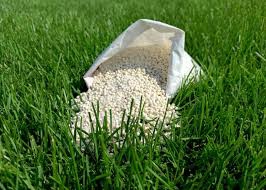🌪️ After the Storm: How to Help Your Lawn Recover from a Hurricane
From Westfall’s Lawn & Pest Control
When a hurricane blows through Florida, we all know the drill, check the roof, clear the driveway, and make sure the power’s back on. But once the storm passes, your lawn might be silently suffering.
Heavy rains, high winds, and saltwater flooding can do serious damage to your turf. But don’t panic! With a few smart steps—and a little help from Westfall’s Lawn & Pest Control you can bring your lawn back to life.
Here’s what to look for and what to do after a hurricane to restore your yard and keep your grass healthy.
🧹 1. Clear Debris ASAP
Hurricanes usually leave a mess—branches, leaves, and all kinds of random junk. While it might not seem urgent, this debris can smother your grass, blocking sunlight and air circulation. Mold and fungus love dark, damp conditions, so give your lawn some breathing room and clear everything off as soon as it's safe.
💧 2. Watch Out for Standing Water
All that rain can leave behind puddles or waterlogged soil, especially in low spots. That excess moisture can suffocate roots and attract pests (mosquitoes, we’re looking at you). If the water isn’t draining, your soil may be compacted—and that’s where our team can help improve drainage.
🌊 3. Deal with Saltwater Damage
If you live near the coast or a flood zone, saltwater flooding is a big concern. Salt pulls moisture away from your grass roots, causing dry, brown patches that look a lot like drought stress—but water alone won’t fix it.
That’s where gypsum comes in.
🌿 4. How Gypsum Helps Your Lawn Recover
Gypsum (calcium sulfate) is one of the best ways to restore your soil after saltwater exposure. At Westfall’s, we offer professional gypsum treatments that:
🧂 Displace harmful salt from the soil
💧 Improve water infiltration and root recovery
🪨 Break up compacted soil for better drainage
🌱 Help nutrients reach your grass again
It’s a simple, natural solution that helps flush out salt and restore soil health getting your lawn back on track faster after the storm.
🍃 5. Look for Signs of Stress
Even if your lawn wasn’t flooded, it might still be in trouble. Here are a few red flags to watch for in the days after a hurricane:
Yellowing or browning grass
Mushy, soft soil
Foul smells (from stagnant water or rot)
Unusual pests like chinch bugs or sod webworms moving in
If you spot any of these, call us. We can inspect the damage, apply the right treatment, and help stop long-term issues before they take root.
💚 We’re Here to Help, After the Storm and Always
At Westfall’s Lawn & Pest Control, we’re proud to help Florida homeowners bounce back after big weather events. Whether it’s saltwater damage, lawn disease, or compacted soil, our team is trained to restore and protect your turf.
Need help getting your lawn back in shape? Ask us about our gypsum recovery treatments or schedule a post-storm lawn check-up today.


